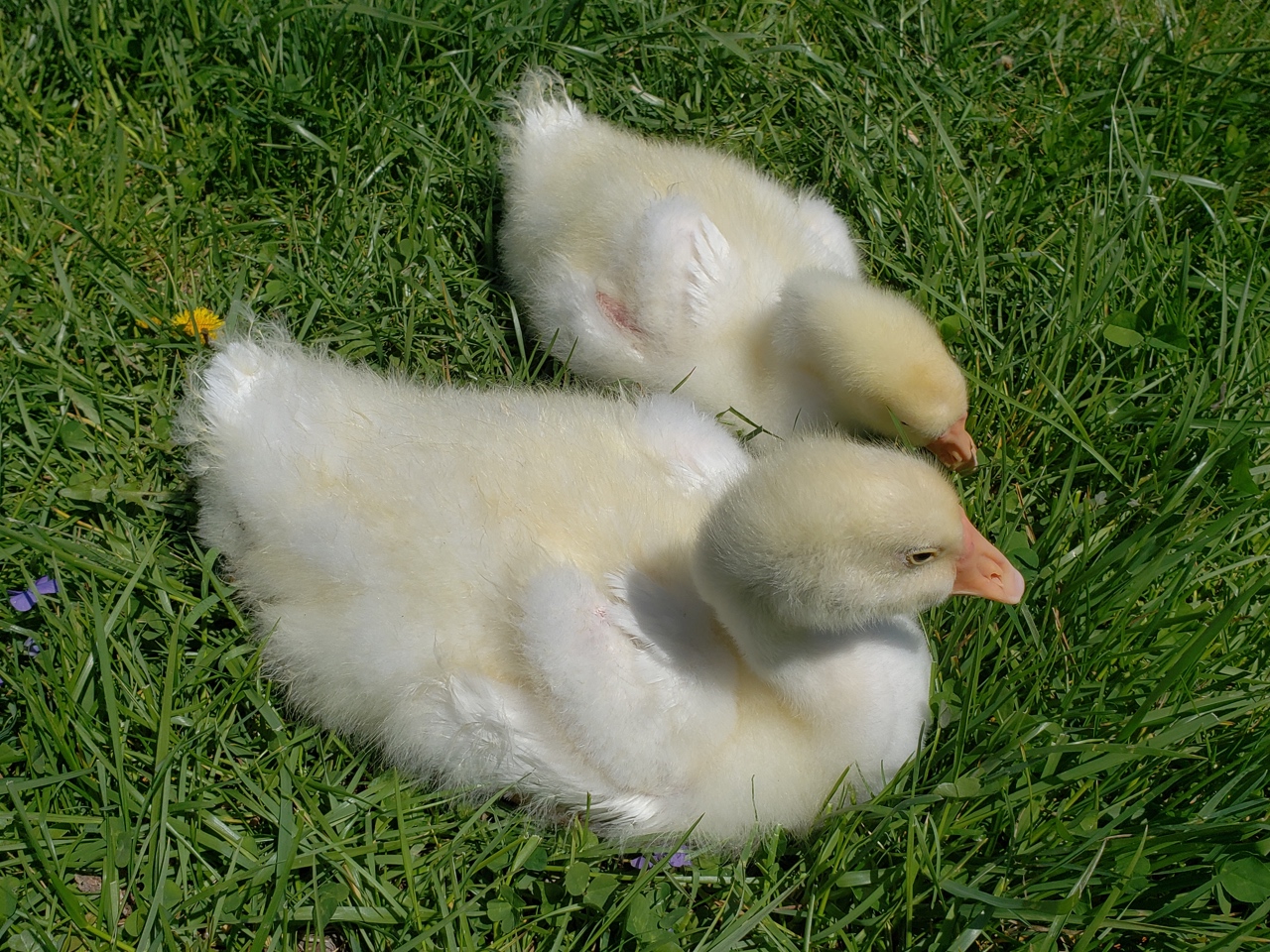
How time flies…our first goslings were hatched a month ago from our goose’s eggs. There were only 2 eggs (of her first 5) that made it to lockdown, so we kept our fingers crossed that both would hatch…and they did! We now think we have a little goose and gander, based on differences in their behavior and physical characteristics.
Those adorable little goslings have grown, seemingly in the blink of an eye, into juveniles – and real feathers are replacing that fluffy down. While we’ve previously raised ducklings, goslings are a little different, and we wanted to share what we’ve learned to date about raising them:
- They’re as messy, especially with water, as ducklings. Keeping bedding dry will be a challenge; brooding in a plastic wading pool just makes sense. Using customized waterers (plastic jugs with holes cut into them to allow drinking but prevent full-body access) contain the mess better than chicken waterers or open containers.
- They’re eating (and pooping) machines. You’ll need to constantly fill bowls and add or replace bedding. Pine shavings are absorbent and work well, though they will likely eat some shavings as they track it into their food and water. Be sure to provide grit!
- They take to fermented feed quickly…but will end up covering themselves and their surroundings in it (again: plastic pool brooder). We sprinkle nutritional yeast on their feed for the extra niacin, and they scarf it right down.
- They love their greens. We start them in their first week with finely-chopped grass and pasture greens, along with grit. Watching them gobble it up, you understand why they’re called “weeder geese”. As adults, much of their diet will be comprised of greens.
- They enjoy walks (during which they will graze on pasture greens) and will return to their brooder tired and ready for a nap. You’ll enjoy watching them running around you and bouncing off each other like bumper cars. Just watch your feet.
- Older goslings will pick on younger ones. When we put two age groups together, the older goose pecked some of the littles, so they remain separate for now. The older gander, however, was gentle, calm, and never pecked any of the babies – he even laid down with them like he was one of their group.
- Imprinted goslings will start making distress calls if you leave the room or if you get too far ahead of them on a walk. And when you turn off the light – they’ll call every night when it’s bedtime, and you just need to walk away and know that they’ll go to sleep and be fine.
- Goslings grow incredibly fast. The second hatch is less than two weeks younger than the first, but probably only a quarter of their weight! The month old goslings look like small geese now, with longer necks, more goose-like bills, and the beginnings of knobs forming.
- Despite the mess, the cleaning and feeding, and the occasional meanness directed to smaller goslings, they’re so much fun to raise and interact with. Watching them rip up grass and eat the seed heads of dandelions never gets old.
Should you raise goslings, yourself? Obviously, it’s a personal decision, but we hope that sharing our experiences so far has provided you with some food for thought. If you’re thinking about potentially adding geese to your homestead, the Livestock Conservancy has a Goose Breed Comparison Chart that can help you make an informed decision about breed: https://livestockconservancy.org/index.php/heritage/internal/goose-chart.

Comments are closed.